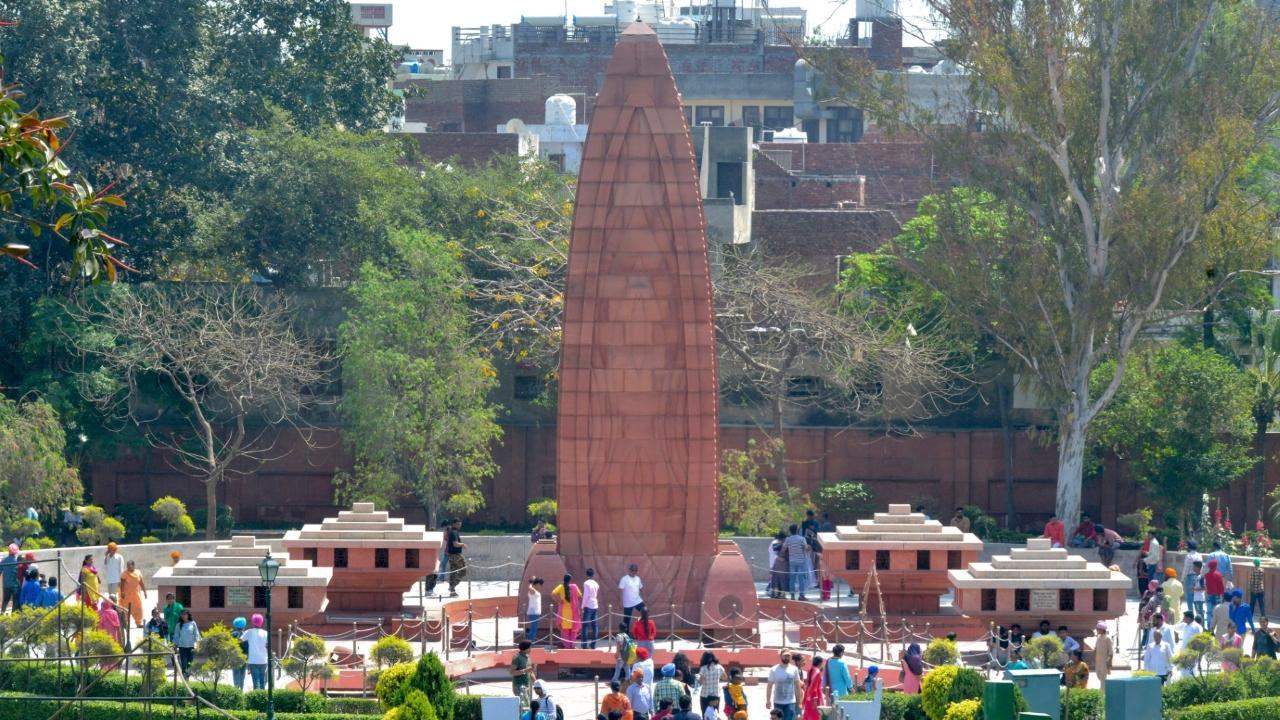In 1997, Queen Elizabeth II laid a wreath at the site but her gaffe-prone husband Prince Philip stole the headlines by reportedly saying that Indian estimates for the death count were "vastly exaggerated"

Indian visitors gather near the Jallianwala Bagh Martyrs' Memorial Pic/AFP
Queen Elizabeth II, who died aged 96 last year, was the first British monarch to accede to the throne after India's Independence from colonial rule in 1952.
ADVERTISEMENT
Queen Elizabeth visited India three times during her reign. Her final tour in 1997, coinciding with the 50th anniversary of Indian independence, was tainted by rancour. Hours before she landed in New Delhi, police used water cannon to disperse a demonstration against her visit outside the British High Commission.
Protesters -- along with public officials -- were incensed over her plans to visit Amritsar, a western city where in 1919 colonial security forces massacred upwards of 379 people.
The infamous attack in the Jallianwala Bagh walled gardens galvanised contemporary opinion against British rule and remains a sore point in relations.
In 1997, Queen Elizabeth II laid a wreath at the site but her gaffe-prone husband Prince Philip stole the headlines by reportedly saying that Indian estimates for the death count were "vastly exaggerated".
Also Read: Jallianwala Bagh Massacre Anniversary: History, events leading up to it
In the year 2019, India marked the 100th anniversary of the Amritsar massacre, one of the worst atrocities of British colonial rule.
The Jallianwala Bagh massacre, as it is known in India, saw British troops fire on thousands of unarmed people in Amritsar on April 13, 1919.
The number of casualties is unclear, with colonial-era records showing about 400 deaths, while Indian figures put the number at closer to 1,000.
Former British prime minister David Cameron described it as "deeply shameful" in a visit to the northern Indian city in 2013 but stopped short of an apology.
In 2019, former British Prime Minister Theresa May told the House of Commons that the massacre was "a shameful scar on British Indian history."
"We deeply regret what happened and the suffering caused," May said -- but she too didn't say sorry.
History:
Around 10,000 unarmed men, women and children had gathered in the Jallianwala Bagh walled public garden in Amritsar on the afternoon of April 13, 1919.
Many were angry about the recent extension of repressive measures and the arrest of two local leaders that had sparked violent protests three days before.
The 13th of April was also a big spring festival, and the crowd -- estimated by some at 20,000 -- included pilgrims visiting the nearby Golden Temple sacred to Sikhs.
Brigadier General Reginald Edward Harry Dyer arrived with dozens of troops, sealed off the exit and without warning ordered the soldiers to open fire.
Many tried to escape by scaling the high walls surrounding the area. Others jumped into an open well at the site as the troops fired.
 Subscribe today by clicking the link and stay updated with the latest news!" Click here!
Subscribe today by clicking the link and stay updated with the latest news!" Click here!







